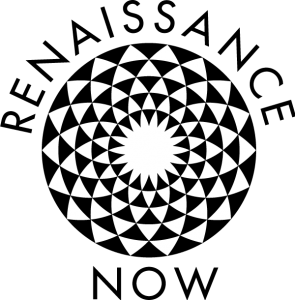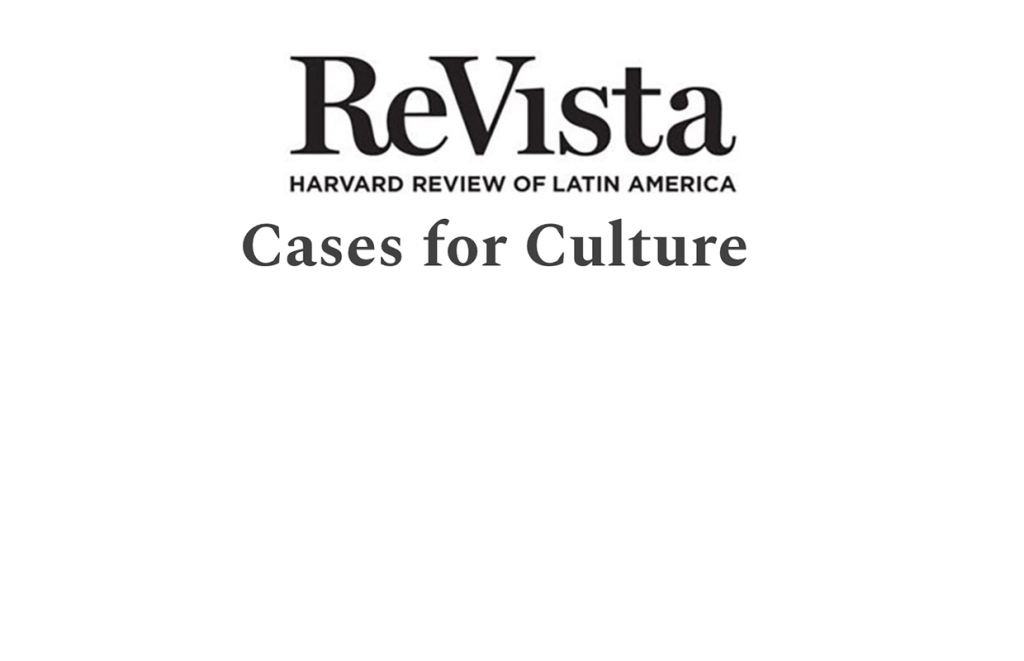By Doris Sommer
Article published by ReVista: The Harvard Review of Latin America
Many practical people probably consider the arts to be decorative or entertaining. They think of art as products rather than process, the preferred meaning among artists. The difference in definition is a matter of professional training: decision makers trained in the social sciences learn that culture is a heritage of shared beliefs and practices, while artists learn that culture as a platform to interrupt heritage and habits. Both meanings are correct, though incommensurable. When the definitions collide, one cancels the other. “They don’t get it,” is the dismissive complaint. But when the opposite meanings acknowledge one other change becomes possible. Shared understandings shift and adjust in response to creative interventions. Human and material resources can combine and recombine in unanticipated ways to make a significant difference.
That’s why we’ve organized a spectacular lineup of artists, educators, engineers, political leaders, entrepreneurs and educators in a day-and-a-half encounter on December 2 and 3 to share Cases for Culture. Our goal is to generate evidence-based studies about the social and economic advances that art enables. The contribution that we can make together is to produce more HBS-type cases that can guide policy decisions by identifying the arts as resources for personal and collective wellbeing. Guidance is in order, José Molinas, former Minister of Development in Paraguay, observed in a conversation about what art means. The new Certificate in Arts and Policy responds to his change of mind. He reflects on missed opportunities by overlooking the arts as drivers of positive change. Brief teaching essays that combine narrative with evidence can make the case for the arts in policy. Exemplary cases exist and several appear on the website Renaissance Now, but “cases for culture” still sounds unfamiliar both in professional schools and in artist studios. On the one hand, the arts don’t appear among the categories recognized in catalogues of cases. On the other hand, many artists remain indifferent to practical fields and to statistical measurement, protecting artistic freedom against “instrumentalization.”
I believe that to persuade both artists and skeptical decision makers. ministers, mayors and CEOs, we must produce more cases for culture to render redundant a defense for artmaking. Writing more illustrations of the arts as responses to stubborn challenges will confirm the connection between participatory arts and development. Cases for culture are teaching tools for academics and for civic leaders who can consider how and why participatory arts address intractable problems. Climate disaster, inequality, violence and depression are transversal across disciplines and across populations. The arts can weave among disciplines and people to link broad bases of participants to a range of experts through engaging activities that develop care for one another and for the earth.
Consider a Paraguayan youth orchestra that recycles garbage from rivers to interrupt environmental degradation. The young musicians also travel to perform concerts—at schools, hospitals and community centers internationally—so they count on services of transportation, security, public health, education and economic development. Consider too Mexico’s post Revolution Secretary of Education José Vasconcelos who managed to rebuild the devastated country by combining arts with education. Opportunities like these to bridge fields in complex arrangements are not rare, but they need to be more evident and compelling by adding quantitative documentation in cases for culture. Otherwise, for many decision makers the arts may stay undetected as effective if indirect interventions in urgent challenges.
With a keynote speech delivered by Salvador del Solar—actor, director, and former Prime Minister of Peru—the stage is set to consider what art brings to leadership. Del Solar celebrates the exquisite everyday cuisine of Peru that has boosted tourism and inspired pride of place for Peruvians. This is an opening moment for us to consider the social and economic effects of participatory arts in general [cooking, music, theater, murals, poetry, singing, storytelling, etc.] For some, these arts seem immeasurable and immune to quantifiable evaluation. Art doesn’t work that way, creatives sometimes complain. It should be free from economistic thinking in numbers and in graphs. But we should take practical stock of art’s effects. Without cases for culture, arguments for public and private support for the arts can fail when decision makers assume that money is better spent elsewhere. By documenting the low cost and high impact of participatory arts that address otherwise intractable challenges, budgets may change along with the concept of creativity. Human beings are dynamic; either our energy pursues creative activities, or it festers in frustration that can erupt in violence. The arts make good sense if we make a case for them.
Stellar participants who represent arts, politics, health, entrepreneurship, engineering, law and education combine to achieve a major objective of the conference even before it starts. We want to connect the range of experts through the arts, to foster interdisciplinary collaborations. We can recognize a link of shared practices. Like scientists, artists explore materials, including words and gestures; like engineers and entrepreneurs, artists model ways to break habits and try out new behaviors, expecting to fail along the way. In fact, working like an artist characterizes innovation in general; it means making something new, something that surprises the public and stimulates curiosity which leads to learning, conversation, and sociability. These are interpersonal activities worth cultivating if we hope to sustain democracy, a political experiment that depends on general participation and on judgment to reach agreements. It may sound surprising to argue for art and interpretation as foundations for non-violent democratic societies, but that was Kant’s proposal in his Third Critique of Aesthetic Judgment, written to rescue sociability from the single-minded arrogance of reason. The Enlightened defense of aesthetics continues through German philosopher Immanuel Kant’s disciple Friedrich Schiller, in response to the Terror in the French Revolution. Schiller understood judgment as a pause in the process of artmaking to determine how to proceed. The way to proceed during a reign of terror should avoid answering violence with more violence, he wrote. Instead, we should make art, to surprise and intrigue the enemy. Human beings have an innate human “play drive” to sidestep vicious and violent circles, to liberate new spaces and to recognize human creativity as a social resource. Schiller was sure that artmaking can bridge personal wellbeing with political freedom.
Do we have evidence to support his enlightened faith? Can making new things, performances, and interpretations, lead to human flourishing? If so, we need Cases for Culture to bring the effects to the fore. Maybe we will observe that the time-consuming and difficult activities related to artmaking are felt like a flow that defies the impatient habits and short-term thrills associated with abusive behaviors. The arts keep participants too busy to resort to the abuses of drugs or crime or teen pregnancies.
Thinking like artists, people address problems as challenges that stimulate cognitive and emotional energies. Problems are no longer obstacles, when artmaking demands judgment and decisions about how to use available time and materials. The link to health and psychological wellbeing should be obvious. People who judge and make decisions mitigate the depression and anxiety that present as helplessness, indifference and loss of pleasure. Artists are agents, not victims. Even miserable environments provide raw material for artists to recycle and imagine change, to develop the skills that can drive change. Whatever the aesthetic value of the results, artmaking is active and autonomous, available to everyone as processes that increase social capital and reduce depression.
Cases for culture will provide readings and ignite discussions for an efficient certificate program designed by Renaissance Now to make good on the resource of participatory art. The Certificate “Arts and Policy” is a brief series of four online seminars and four in person workshops to address the skepticism of many decision makers regarding the arts as practical interventions. They learn to think like artists and to acknowledge what artists contribute to society. Born of the imposed isolation and time to think during the Covid-19 lockdown, Renaissance Now revives the early modern spirit of exploration and engagement to respond to contemporary crises.
That is what happened in the Italian Renaissance, a model for development that we can refresh today. The Renaissance broke from conventional practices and reshaped Europe with effects felt worldwide, unequally as we know. The posterchild for Italy’s Renaissance is the Duomo in Florence. It was a collaboration between the Medici and a young architect who promised to build the tallest cathedral in Europe without external supports. Other investors dismissed the architect Filippo Brunelleschi as delusional and dangerous because bricks would fall on many heads. But the Medici risked their money and credibility on him. The risk paid off in prestige and power for the Medici. As Renaissance men they were not experts in everything —despite the current popular usage—but people who know how to collaborate and to trust the expertise of partners. How did this boldness erupt in the 1400s? What conditions prepared an astounding shift from God-centered living to putting humans at the center of human life? Why did intellectuals and artists opt for secular careers instead of going to the cloisters? The moment marked the end of a plague. Europe was emerging from a devastating disease that had lasted for almost a century. This was a wakeup call to the value of life on earth, like today’s wakeup call as we emerge from isolation and witness the devastation of our planet.
In post-pandemic times, the opportunity and obligation to be renaissance people includes everyone. We can learn from current social innovations through cases for culture and trigger new innovations with support from decision makers. Using the Renaissance name conjures a drive to engage lockdown pent-up energy to experiment and to collaborate in response to urgent challenges. Climate disaster, food insecurity, depression, inequalities of gender and race, among other challenges remain intractable if we treat them with one skill set or another. Each challenge depends on all the others, Harvard’s Fawwaz Habbal explained years ago when the United Nations first issued its 16 Sustainable Development Goals. Experts who remain in silos miss the connections while collaborators show more ambition and more humility. Contemporary societies require this combination of boldness and admiration for one another. We thrive on inclusion and broad participation in public life while exclusions produce and predict more inequality, scarcity, and violence.
Coming out of lockdown and having survived the terror of cluelessness about Covid we now face another fundamental terror, a fear for the future of our planet. Centuries of environmental abuse have rendered a deteriorated earth into a fragile and unreliable platform for human life. It is a shifting terrain of natural disasters and desperate migrations. Massive movement of people who cannot look back to lands that are off limits because of war and/or famine challenge the coherence of national cultures and identities. This challenge provokes either defensive exclusions or innovative ways to welcome foreigners. Humane models exist and can, perhaps, take the lead, if the advantages of hospitality become evident to decision makers. Cases for Culture can help to do this work. Implementation with measurable results can produce new cases for culture in a virtuous circle of collaboration and ever-increasing participation in programs that use arts to care for human life and for the planet.



